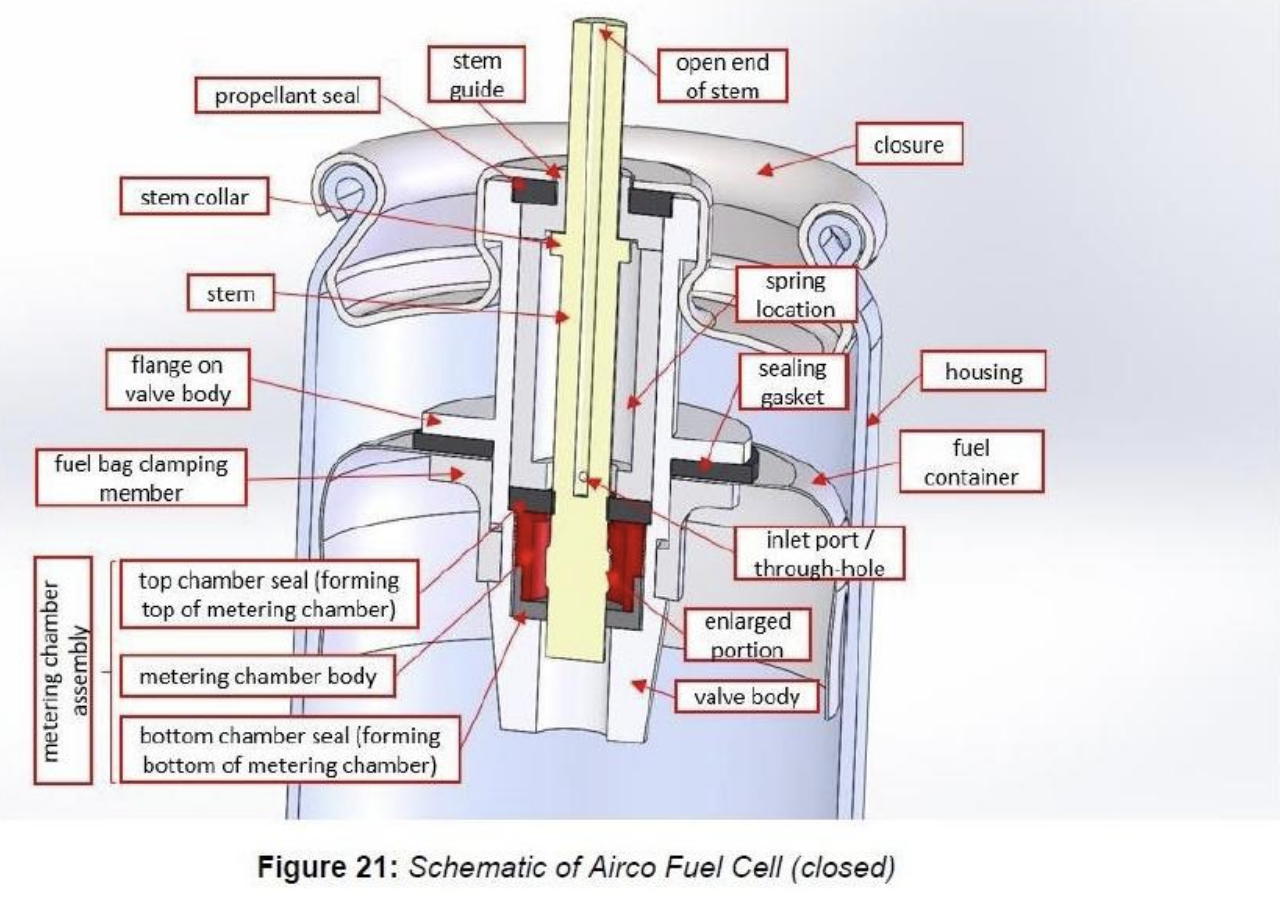Airco have failed in their challenge to an earlier court decision holding that certain Airco fuel cells are covered by Illinois Tool Works’ (ITW’s) Australian patent number 2005232970. The decision highlights the importance of the wording in a patent and that the interpretation of wording can often be argued one way or the other.
Figure 1 of the patent is reproduced below. The patent describes “a second end 62 defining a nipple portion of the valve body 34” (paragraph 26), closure 16 and metering chamber 38.
The coverage of the patent is limited in the following terms:
- A fuel cell for use with a combustion tool, comprising:
- a housing defining an open end enclosed by a closure;
- a main valve stem having an outlet, disposed in operational relationship to said open end and reciprocable relative to said housing at least between a closed position wherein said stem is relatively extended, and an open position wherein said stem is relatively retracted;
- a fuel metering valve associated with said main valve stem, including a fuel metering chamber disposed in close proximity to said closure and configured so that when said stem is in said open position only a measured amount of fuel is dispensed through said outlet;
- said housing including a separate fuel container,
- wherein said fuel metering valve is located within said housing and includes a valve body having a second end opposite said fuel metering chamber located within said container, and (7) wherein the flow of fluid out the outlet of the fuel cell is solely from said separate fuel container.
In Airco’s version of the fuel cell, the metering chamber sits much lower down (see below). Airco argued that its fuel cell did not have the features bolded above. The court disagreed.
The original judge and all three judges of the appeal court agreed “that the phrase ‘close proximity’ is used to describe the disposition of the fuel metering chamber relative to the closure in the context of the fuel cell as a whole” (paragraph 53) and indeed Airco’s metering chamber is in close proximity to the closure relative to the very bottom of the container shown above.
Likewise, all four judges agreed that “opposite” should be interpreted in the sense that serves to align the features as in the features “facing or across from each other” (paragraphs 29 and 66), so that Airco’s metering chamber is opposite the second end (i.e. the portion to which the label “valve body” points) even though those two things are adjacent to each other and are not at opposite ends of the valve.





